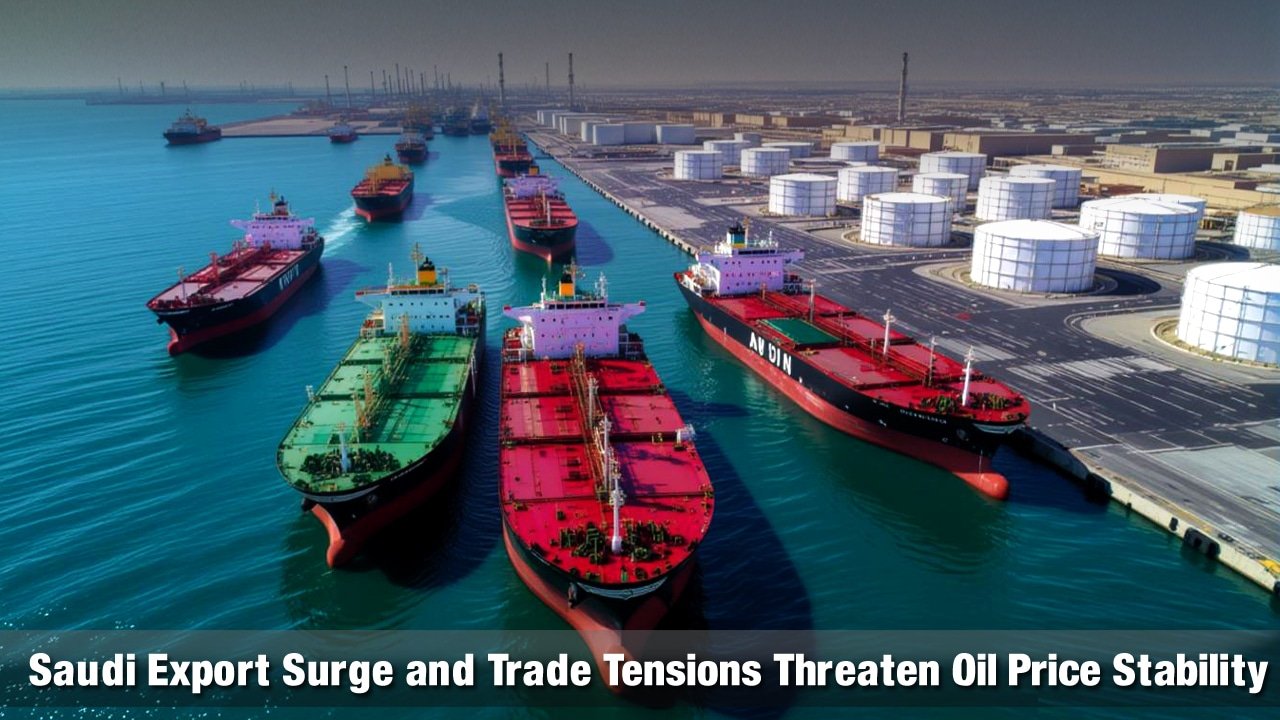
Saudi Aramco is ramping up oil production, with exports expected to hit 7.5 million barrels per day in July—the highest level since April 2023. This increase comes at a time when global oil demand is showing signs of slowing.
Despite market concerns around shifting U.S. trade policies and rising production quotas from OPEC+, oil prices have stayed relatively strong throughout the year. However, with Saudi supply increasing and demand uncertain, pressure on oil markets is likely to grow.
Benchmark crude is currently trading around $70 per barrel—down from a 2025 peak of $82 in January, but still higher than the $62 low seen in May after unexpected tariff changes from the U.S. government created market uncertainty.
Investor concerns grew after a major policy shift from OPEC+, led by Saudi Arabia, which began increasing production for the first time in over three years. Between April and September, the group plans to add 2.5 million barrels per day, thereby increasing the global oil market’s supply.
Even with these changes, crude oil prices have stayed relatively strong. Why? Because many of the expected risks haven’t happened yet. Trade tensions between the U.S. and China also eased after positive discussions, helping to calm market fears.
While global economic growth has slowed, the drop hasn’t been as sharp as expected. According to the World Bank, global GDP is forecast to slow to 2.3% in 2025.
As for OPEC+ increases, much of it was already happening behind the scenes. For example, Saudi Arabia’s extra production in June was mainly used at home—in refineries and power plants during summer’s high electricity demand—so exports didn’t spike as much as expected.
Market Shifts in Motion
The oil market is showing signs of significant changes. Earlier concerns that spooked investors are starting to take shape as we enter the second half of 2025.
New U.S. trade tariffs—especially those on copper, Canadian goods, and imports from countries such as Japan and South Korea—are contributing to increased global uncertainty. This is already slowing down crude oil demand. According to the IEA, demand grew by 1.1 million barrels per day (bpd) in Q1 2025 but is expected to drop by half in Q2.
Countries with strong trade ties to the U.S. are seeing the sharpest declines:
- China’s demand dropped by 160,000 bpd
- Japan by 80,000 bpd
- South Korea by 70,000 bpd
- Mexico by 40,000 bpd
- Even the U.S. saw a decline of 60,000 bpd
These dips could worsen if trade tensions escalate further.
On the supply side, Saudi Arabia is ramping up production again. While their April exports were 5.9 million barrels per day (bpd), this figure rose to 6.4 million in June—and is projected to reach 7.5 million bpd in July, the highest since April 2023. With summer energy demand easing, more crude is available for export instead of being burned locally for power generation.
Saudi Arabia is also seeking to reclaim market share, particularly in China, where exports are expected to reach a two-year high in August. Globally, OPEC+ and other oil producers are projected to increase total output by 2.1 million barrels per day (bpd), resulting in a global supply of 105.1 million bpd this year.
However, with global demand estimated at 103.7 million barrels per day (bpd), the result is a possible oversupply of 1.4 million barrels per day. This surplus could lead to severe downward pressure on oil prices, particularly by the fourth quarter of 2025.
If the new tariffs from the U.S. are fully enforced, demand could weaken even further, deepening the potential imbalance between supply and demand.

Editor-at-Large
A passionate writer in the lubricant industry, Awais Iqbal has been covering oils, greases, and industrial fluids since the start of his career. At 25, he’s already written for blogs, catalogs, and brand guides across the UAE. Awais’s insights help companies connect with their audience, and his clear, helpful writing style is trusted by brands in the region.


